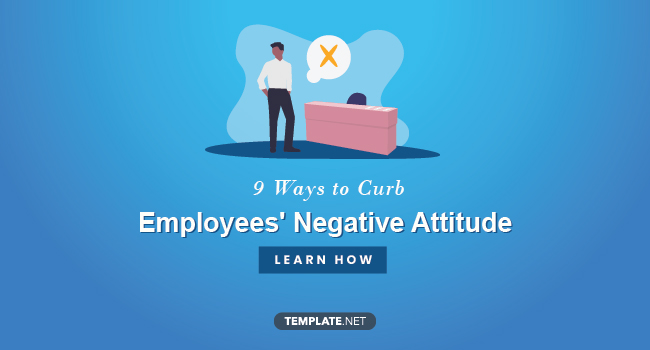
How to Deal with an Employee with a Negative Attitude
While it is unfortunate, there will always be that one employee in the office who has such a negative attitude.…
Jun 22, 2022
While it is unfortunate, there will always be that one employee in the office who has such a negative attitude. These people tend to affect the workplace if left unchecked. Also, pessimism can cause challenges in the office ranging from performance management issues to simply putting others in a bad mood. Dealing with these kinds of employees is a crucial HR role as it will help maintain a pleasant working environment for all the other employees. These people tend to complain a lot about the work, and it is up to you to turn those complaints into a constructive one. That way, this employee is less negative and more productive in their attitude.Use your HR skills to turn those frowns upside down. If you are having a challenge on how to deal with those negative-minded employees, then here are nine ways to get started.

Sometimes, the best way to deal with these kinds of employees is to speak with them directly. If you have noticed that an employee of yours has been consistently expressing a negative attitude during work hours, you can have a one-on-one meeting with them. During the meeting, try to point out their attitude in a gentle manner. Communicate about how their character is negatively affecting the workplace, and think about how you can constructively eliminate this issue. Try to watch your choice of words when talking to these kinds of employees as they might get defensive about this. Remind them while their attitude is an issue, both of you will solve it together. It will encourage the employee to try and lessen their negative attitude.
To deal with the problem positively, you need to listen to the employee first. Hear them out so that you will figure out what exactly is causing their negative attitude. If you are having a one-on-one session with them, try not to make the conversation confrontational. Put an effort in making them feel comfortable and relaxed during this meeting. When they talk, avoid talking over them or interrupting as that could derail the conversation and be completely unproductive in solving the issue.Provide Feedback
It is important to give feedback to these employees to call to attention the issue they are causing. Giving constructive feedback on an employee’s negative attitude will allow them to understand what the problem is. Do not just point out that their behavior needs to be better. Instead, highlight reports of their negative attitude and tell them how they could have behaved in another way.
To deal with the negative attitudes of employees, one way you can do it is by creating positive interaction. You can start by making an effort to start a friendly communication with these employees. Having friends in the workplace tend to lessen people’s negative attitudes. To maintain positivity, you can also set up employee engagement activities as well.
Dealing with a negative employee does not just mean calling out on their behavior, but also telling them how to change it. When you find out the reason for their negative attitude, help your employee out by offering solutions. Motivating your employees in dealing with their problems and giving them advice can go a long way.
When trying to change an employee’s negative attitude, be specific on the changes you would like to see. Do not just tell the employee that they need to change their behavior. Guide them and let them understand how they can improve so that it can change quickly and easily.
For you to properly deal with the issue, you must do something about the employee’s negative attitude. Develop an action plan where you can do away with or at least manage the employee’s attitude to lessen any more issues with them. Whatever the action plan is, make sure it is something that requires both of you to get it done. For example, you can have weekly meetings on how to practice turning negative attitudes into productive behavior. Do not try to give the employee an action plan where it involves the employee on their own as it will be difficult for them to change all by themselves.
It goes without saying, but a negative employee has a negative effect on the workplace. Try to make your employees understand the consequences of their behavior. They could be affecting the other employees’ attitudes or bringing their morale down. Be direct and constructive when working out the impact of their behavior. Making them understand the ramifications is the first step to helping them realize that they need to change their attitude.
One way to deal with an employee who has a negative attitude is to find the root cause of it. Having a meeting with the employee can go a long way. Create a safe space where your employee can bring up issues so that you will be able to do some analysis and figure out what is the source of this attitude. Moreover, do not try to pry if you sense that the employee is not mentioning something and try not to question it further.
When dealing with an employee who has a negative attitude, always remember that there is a reason why they are that way. One way to properly deal with it is to communicate with them and help them express their issue in a constructive manner. That way, when you find the source of the issue, you can understand and help your employees become better individuals. While it may be hard to change the character of a person, it would never hurt to at least try. Eliminating negativity in the workplace is one of the most challenging aspects of HR planning, but a rewarding one at the end of the day.